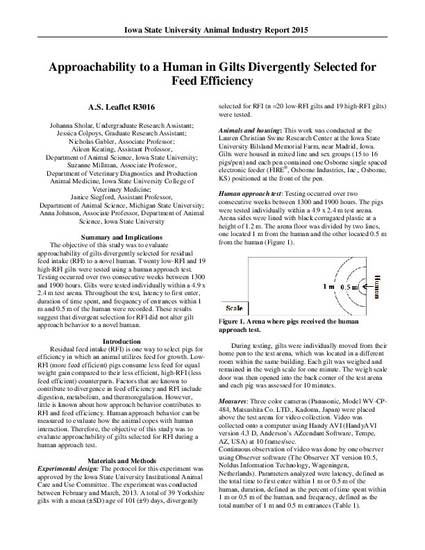
Unpublished Paper
Approachability to a Human in Gilts Divergently Selected for Feed Efficiency
Animal Industry Report
Extension Number
ASL R3016
Publication Date
2015
Disciplines
Topic
Swine
Summary and Implications
The objective of this study was to evaluate approachability of gilts divergently selected for residual feed intake (RFI) to a novel human. Twenty low-RFI and 19 high-RFI gilts were tested using a human approach test. Testing occurred over two consecutive weeks between 1300 and 1900 hours. Gilts were tested individually within a 4.9 x 2.4 m test arena. Throughout the test, latency to first enter, duration of time spent, and frequency of entrances within 1 m and 0.5 m of the human were recorded. These results suggest that divergent selection for RFI did not alter gilt approach behavior to a novel human.
Copyright Holder
Iowa State University
Copyright Date
2015
DOI
https://doi.org/10.31274/ans_air-180814-1333
Language
en
Citation Information
Johanna Sholar, Jessica D. Colpoys, Nicholas K. Gabler, Aileen F. Keating, et al.. "Approachability to a Human in Gilts Divergently Selected for Feed Efficiency" (2015) Available at: http://works.bepress.com/anna_butters-johnson/42/
